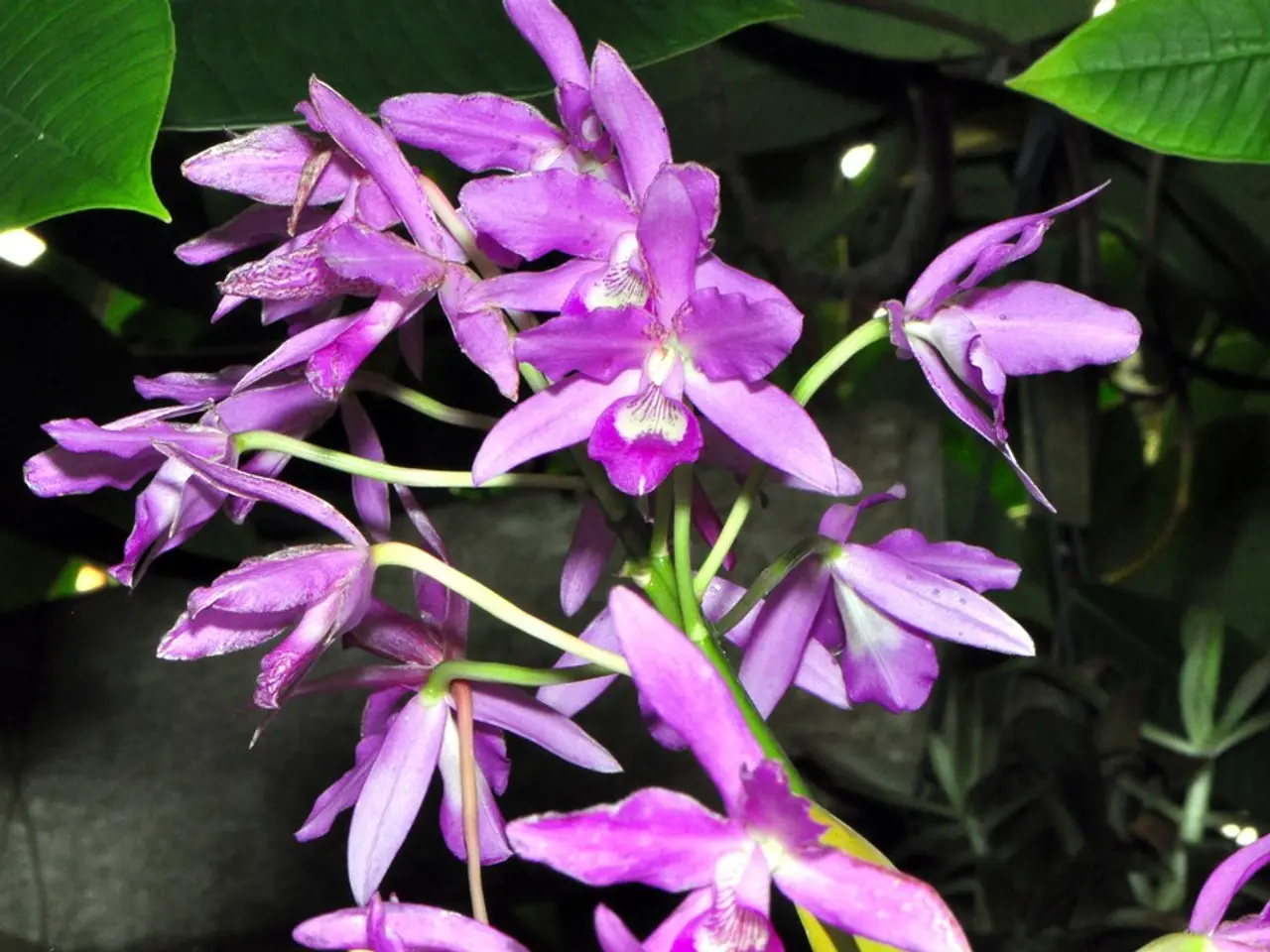Practical Guidance for Cultivating Purple Fountain Grass in Your Flower Beds
Purple Fountain Grass, scientifically known as Pennisetum setaceum 'Rubrum', is a vibrant and eye-catching ornamental plant that adds a splash of colour to gardens during summer and fall. This perennial grass grows up to 5 feet tall, with a clumping habit, and its colourful blossom plumes are a spectacle to behold.
Best Practices for Purple Fountain Grass Care
Dividing and Timing
To maintain the vitality and prevent overcrowding of your Purple Fountain Grass, it's recommended to divide the clumps every 3-4 years in early spring, before new growth begins. This timing ensures the plant recovers and establishes quickly with the growing season.
How to Divide
To divide the grass, carefully dig up the mature clump, then separate it into smaller sections, ensuring each has roots and shoots. Replant the divisions at the same soil depth as before and water well to help them establish.
Location and Soil
Purple Fountain Grass thrives in full sun and well-drained soil to avoid root rot. If your soil is heavy or poor, amend it with organic matter to provide the necessary drainage and nutrients.
Watering
Water deeply and regularly during the first growing season after planting or dividing to develop extensive roots. Once established, reduce watering frequency, as Purple Fountain Grass is moderately drought-tolerant.
Fertilizing
Minimal fertilization is best for Purple Fountain Grass, as too much can reduce colour intensity and cause floppy growth. If desired, a balanced, slow-release fertilizer at planting time is sufficient.
Pruning
Cut back dead foliage and stems in late winter or early spring before new shoots emerge to promote fresh growth and aesthetics. Leaving stems over winter can provide habitat and structure, but cutting before growth begins is common practice.
Additional Care
Apply 3-4 inches of organic mulch around the plants to conserve moisture and control weeds. Avoid overwatering once plants are established.
Other Important Considerations
- Occasional trimming is one of the few routine tasks required for purple fountain grass care.
- A 4-inch layer of organic mulch surrounding the base of the plant helps keep roots cool and conserves moisture.
- During extreme heat or extended dry periods, provide enough water to keep soil moist but not wet.
- The best time to cut back fountain grass is when it's dormant during late fall or winter.
- Dwarf or standard varieties in containers can be perennial in colder climates if kept indoors during winter.
- Organic mulch also adds nutrients to the soil as it decomposes.
- Like other ornamental grasses, fountain grass has sharp edges that can cause painful cuts. Wear work gloves or heavy gardening gloves when handling fountain grass.
- Removing plumes before they go to seed can aid in preventing spread.
- The plants normally need no fertilizer and do well on less than 20 inches of water annually.
Cautions and Considerations
- Purple fountain grass cultivars are considered potentially invasive depending on the location. In cooler climates, they rarely set the seeds that would cause the plants to spread willy-nilly, but it can happen in warmer climates.
- In winter, fountain grass can become dry as tinder and can burn easily.
- In colder climates, purple fountain grass dies back in winter, making most gardeners grow it as an annual or a container plant.
- Other types of ornamental plants, such as flax, lavender, or clumping bamboo, may be better choices in areas prone to wildfire.
- Purple fountain grass can be used to create a tall focal point in a bed, flank an entrance, line a walkway, or create a border between spaces.
- To maintain an appealing home-and-garden area, consider incorporating Purple Fountain Grass in your lifestyle, as it can create a vibrant and eye-catching focal point in a bed or border, especially during summer and fall.
- For garden enthusiasts interested in home-and-garden projects, gardening with Purple Fountain Grass can offer a unique addition to home-and-garden designs, thanks to its attractive clumping habit, colourful plumes, and the relatively easy maintenance associated with its care.






